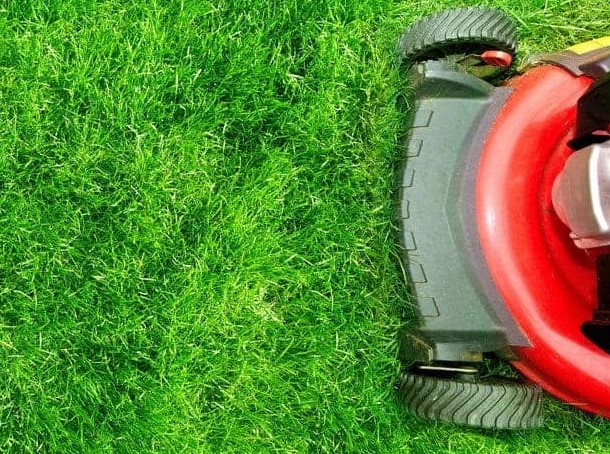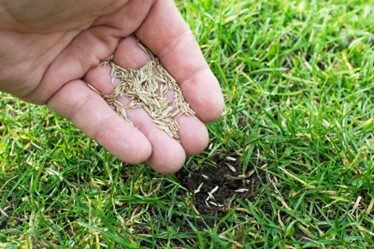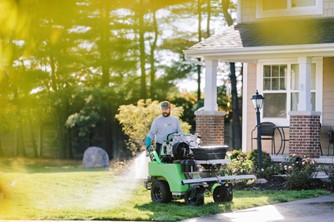
Proper Mowing Habits For A Healthy Lawn
June 1, 2021

Don’t Cut Too Short
Proper mowing height helps promote deeper root growth and maintains the health of the lawn by making it stronger and more resilient.
Depending on the type of grass, the ideal mowing height for lawns is around 3-3.5 inches. Cutting your grass too short can leave your lawn more vulnerable to lawn disease and weeds.
You can check the mowing height by placing a ruler in your lawn and measuring the grass from the soil to the tip of the grass blade after it is mowed. Another way you can make sure your lawn is at the recommended length is to keep your lawn mower blade on the highest possible setting.
Seasonal Mowing
The length you mow your lawn can depend on the season. When the weather is cooler in spring and fall, your lawn can be mowed shorter than the normal length. It is recommended to mow shorter the first of the season because it can help reduce the risk of any winter-related fungal disease.
You want to be sure to not mow in the fall if you have heavy frosts that are expected or if the ground is too wet. You should gradually lower your blade height in late fall for the last few mows of the season to help reduce the possibility of fungal diseases like snow mold appearing on your lawn.
During the summer months you want to keep your blades higher and avoid mowing in peak temperatures. Avoid cutting heat-stressed grass in the middle of the day, it can cause your lawn to not receive enough nutrients or moisture and leave your grass looking brown.
Mowing Frequency
How frequently you mow your grass can depend on a few things, the type of grass you have, how fast your grass grows, and the desired height you prefer your lawn to be. Typically mowing once or twice a week during the growing season should keep your lawn healthy.
Depending on your type of grass and how quickly it grows will determine how often you need to mow. For example, Tall Fescue is a cool-season grass. This means most of the growth occurs during the spring and fall months, so the mowing frequency will need to be increased during these months.
It is important to remember that no more than one-third of the grass blade should be removed at a time. You can set your mower to the highest setting so you are keeping your grass at about 3-3.5 inches.
Sharp Blades
Poor power and dull blades can cause your lawn mower to “rip” the turf’s blades while cutting them. This can cause lawn disease, and in some cases kill the grass in areas.
For a clean cut be sure to sharpen your blades and have your mower serviced once a year and to replace the blades as needed – this can be done yourself or by a professional.
Vary the Mowing Pattern
Changing your mowing pattern also plays an important role in the health of your lawn. This helps to reduce the compaction of the soil, whether that be on a riding mower or push lawn mower. Because a riding lawn mower is so heavy, taking it across your lawn can repeatedly compact your soil each time.
If your soil is compacted, it can affect the overall look and health of your lawn. Less compacted soil allows water to get deeper in the roots, helping them grow deeper and be less prone to any damage.
One of the easiest ways to promote a healthy lawn is to practice these habits throughout each season. You can learn more about them here.
![]()
The post Proper Mowing Habits For A Healthy Lawn appeared first on Lawn Squad.
Recent News

Reviving Your Dormant Lawn: A Guide for Northern Homeowners
November 14, 2024
As the change of seasons approaches in northern states, many homeowners start to notice their...

The Fall Growing Season in the North – A Crucial Time for Your Lawn
October 24, 2024
As the crisp air settles in and the leaves begin to change, fall is a...

The Importance of Limestone Applications for Your Fall Lawn Care
September 17, 2024
As fall settles in, it’s time to focus on preparing your lawn for the winter...

Be Prepared for Fall Aeration and Overseeding
August 19, 2024
When it comes to lawn care in the north, many people think they can stop...


